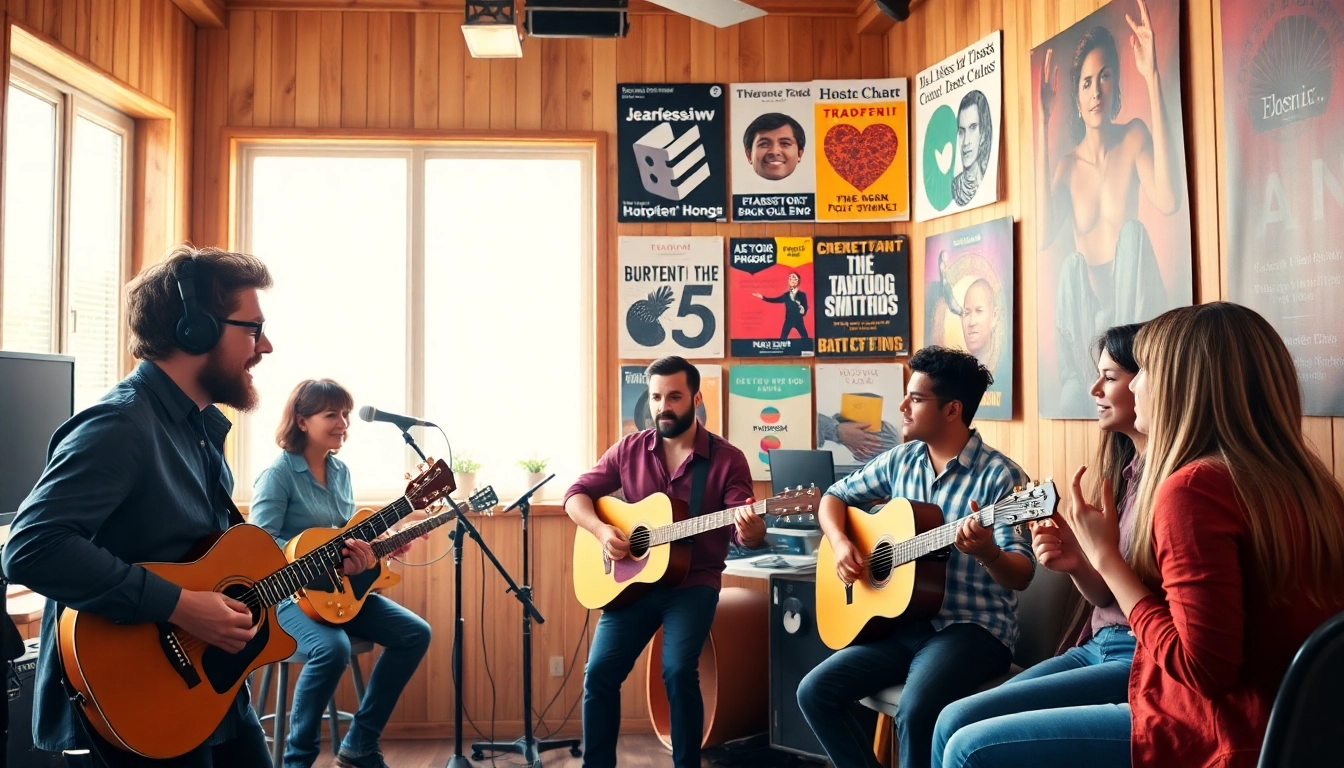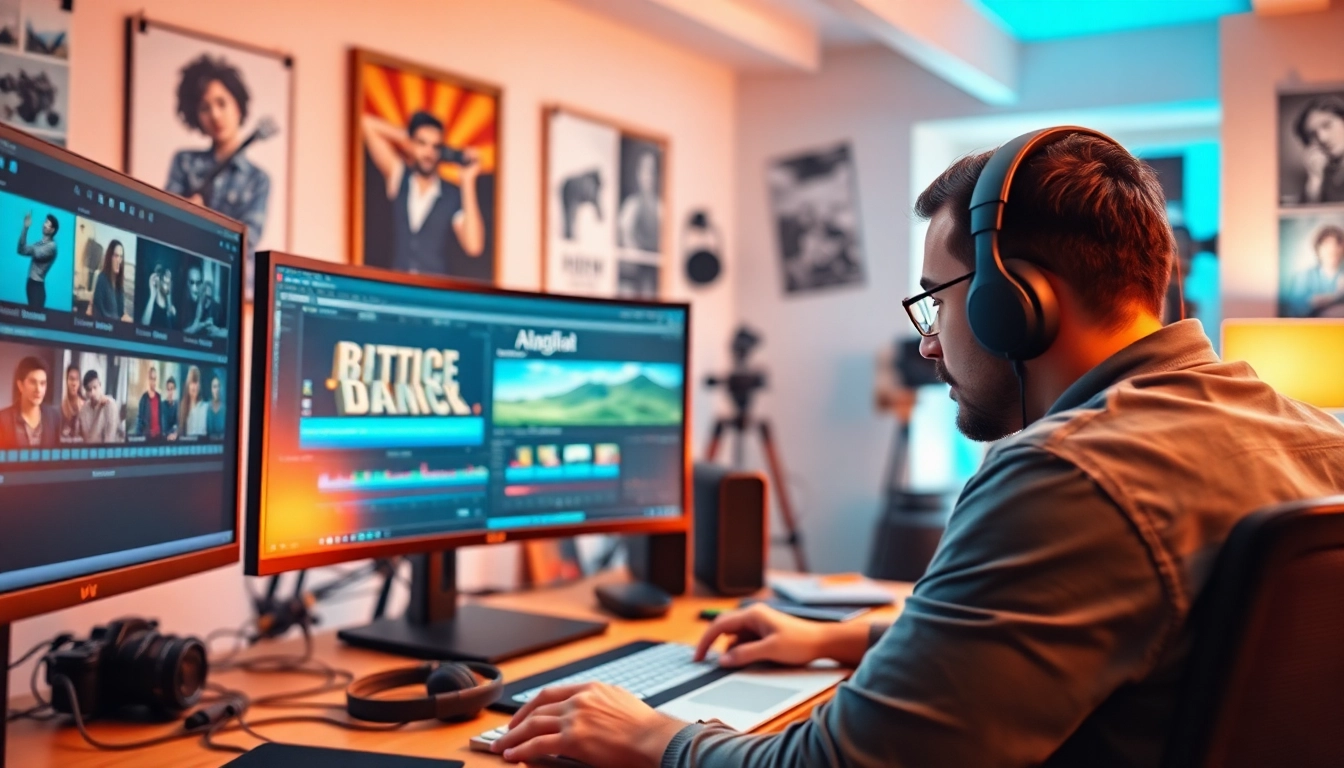Understanding Music Pitching Basics
In the ever-evolving landscape of the music industry, the art of music pitching has emerged as a critical skill for emerging and established artists alike. Whether you are an indie artist looking to amplify your music’s reach or part of a larger label, understanding how to effectively pitch your music can significantly enhance your chances of getting noticed by curators, influencers, and industry professionals. In this comprehensive guide, we will explore the basics of music pitching, its importance, and the various channels through which you can reach your target audience.
What is Music Pitching?
Music pitching refers to the process of presenting your songs or albums to various stakeholders in the music industry, such as playlist curators, labels, music blogs, radio stations, and music supervisors. The goal is to persuade them to feature your music, whether through playlists, reviews, airplay, or placements in film and television. A well-crafted pitch encapsulates your music’s essence and showcases it effectively, ensuring that it resonates with the intended listener.
The Importance of Music Pitching for Artists
Effective music pitching is essential because it can open doors to various opportunities for your music. With the rise of digital platforms, artists face an overwhelming amount of competition, making it more crucial than ever to stand out. Successfully pitching your music can lead to:
- Increased exposure to new audiences
- Opportunities for radio airplay
- Inclusion in curated playlists on platforms like Spotify and Apple Music
- Potential collaborations with other artists and producers
- Increased fan engagement and support
The right pitch at the right time can dramatically shift your career trajectory, leading to performances, sponsorships, or even record deals.
Common Channels for Music Pitching
Understanding the various channels available for music pitching is crucial for targeting your efforts effectively. Here are some common channels where artists can pitch their music:
- Playlist Curators: Both independent and platform-curated playlists are significant in gathering listens and followers. Pitch your music to curators on Spotify, Apple Music, and other streaming platforms.
- Music Blogs: Blogs that focus on music reviews and showcases can be invaluable for gaining exposure. Pitch your music to bloggers who align with your genre.
- Radio Stations: Local and national radio still hold great power in promoting new music. Focus on stations that prioritize independent or emerging artists.
- Influencers and Content Creators: Collaborating with social media influencers or content creators can result in your music being featured in TikTok videos, Instagram posts, or YouTube content.
- Music Supervisors: If you’re looking to have your music featured in television shows, commercials, or films, building a relationship with music supervisors is key.
Preparing Your Music for Pitching
Before you begin reaching out to curators and influencers, it’s vital to prepare your music effectively. Proper preparation not only enhances your chances of success but also reflects professionalism.
Crafting a Professional Demo
Your demo is often the first thing curators will hear, so it needs to be polished and representative of your best work. Here are some tips for crafting a compelling demo:
- Quality Production: Ensure your music is mixed and mastered well. Poor audio quality can significantly diminish your chances of getting noticed.
- Select the Right Tracks: Choose songs that represent your style and have the best potential for success. Aim for high-energy tracks or songs with strong hooks.
- Keep It Short: A professional demo should not exceed 15-20 minutes and should contain 3-5 songs. You want to capture attention without overwhelming your listener.
Essential Materials for a Winning Pitch
In addition to your demo, you will need supplementary materials to make a complete pitch. These might include:
- A Press Kit: This includes your bio, high-resolution images, and any relevant press coverage or features. A strong press kit enhances your credibility.
- Personalized Pitch Emails: When reaching out, draft individual emails tailored to each curator or influencer, highlighting why your music is a good fit for them.
- Links to Social Media and Streaming Platforms: Make it easy for curators to find your music and follow your work by including links to your profiles.
Understanding Your Audience and Curators
An essential aspect of successful music pitching is understanding who your audience is, as well as who is curating the playlists or blogs you want to approach. This means doing your research to identify the specific genres they focus on, the types of music they typically showcase, and their audience demographics. Tailoring your pitch based on this knowledge can significantly improve your chances of getting featured.
Executing an Effective Music Pitch
Once your music is prepared and your materials are organized, it’s time to execute your pitch effectively. Here are some best practices to keep in mind.
Best Practices for Music Pitching
- Be Professional: Use professional language in your emails and maintain a respectful tone throughout your interactions.
- Follow Guidelines: Many platforms have specific submission guidelines. Ensure you adhere to these to avoid disqualification.
- Be Concise: Curators are busy people. Keep your pitches short and to the point while ensuring all necessary information is included.
Timing Your Pitch Correctly
Timing can significantly influence the success of your pitch. For instance, when pitching to Spotify playlist editors, it’s recommended to submit your pitch at least seven days before your release date. This ensures it gets enough exposure before your song drops. Furthermore, consider seasonal trends or particular times when music genres gain more attention, allowing you to align your releases accordingly.
Personalizing Your Approach
Generic pitches are less likely to be successful. Take the time to personalize each pitch by mentioning why you’re reaching out to that specific curator or influencer. This could include referencing previous work they’ve supported or indicating how your music aligns with their taste. Personalization showcases your investment in the relationship and can help build rapport.
Common Mistakes in Music Pitching
Even seasoned professionals can make mistakes when pitching their music. Being aware of common pitfalls can enhance your chances of success.
Avoiding Overly Generic Pitches
A common mistake is sending the same generic email to multiple curators. This approach often leads to your email being ignored. Take the time to craft unique messages targeted to each curator to capture their interest.
Recognizing Red Flags in Rejections
Receiving a rejection is never easy, but it’s vital to assess the reasons provided. If you receive feedback from curators, use it constructively to adjust your future pitches. Common red flags may include inappropriate genre fits, lack of professionalism, or poorly produced music. Recognizing these issues can lead to improvements in your pitching strategy.
Learning from Feedback
Feedback—whether positive or negative—can be invaluable to your growth as an artist. If a curator provides specific feedback, consider how you can implement it into future pitches. This could involve refining your music, improving your pitch materials, or reassessing your networking strategies.
Measuring the Success of Your Music Pitch
After launching your pitch, it’s essential to gauge its effectiveness. Success metrics can help you refine your future strategies and enhance your pitching skills.
Track Engagement and Follow-Ups
Monitor the responses to your pitches. Are curators opening your emails? Are they engaging with your music? Use tools such as email tracking software to evaluate engagement levels. If you don’t hear back within a week, it’s appropriate to send a polite follow-up message to check in.
Analyzing Feedback Metrics
Pay close attention to the qualitative feedback you receive. Are curators consistently steering you toward certain areas of improvement? Understanding these insights can inform the evolution of your music and pitching style.
Adjusting Your Strategy for Future Pitches
Use the data you gather from your pitching efforts to refine your strategy moving forward. Consider experimenting with different genres, pitch styles, or media channels based on the feedback you’ve received and the performance metrics you’ve analyzed. Continuous improvement is key to adapting to this competitive industry.



